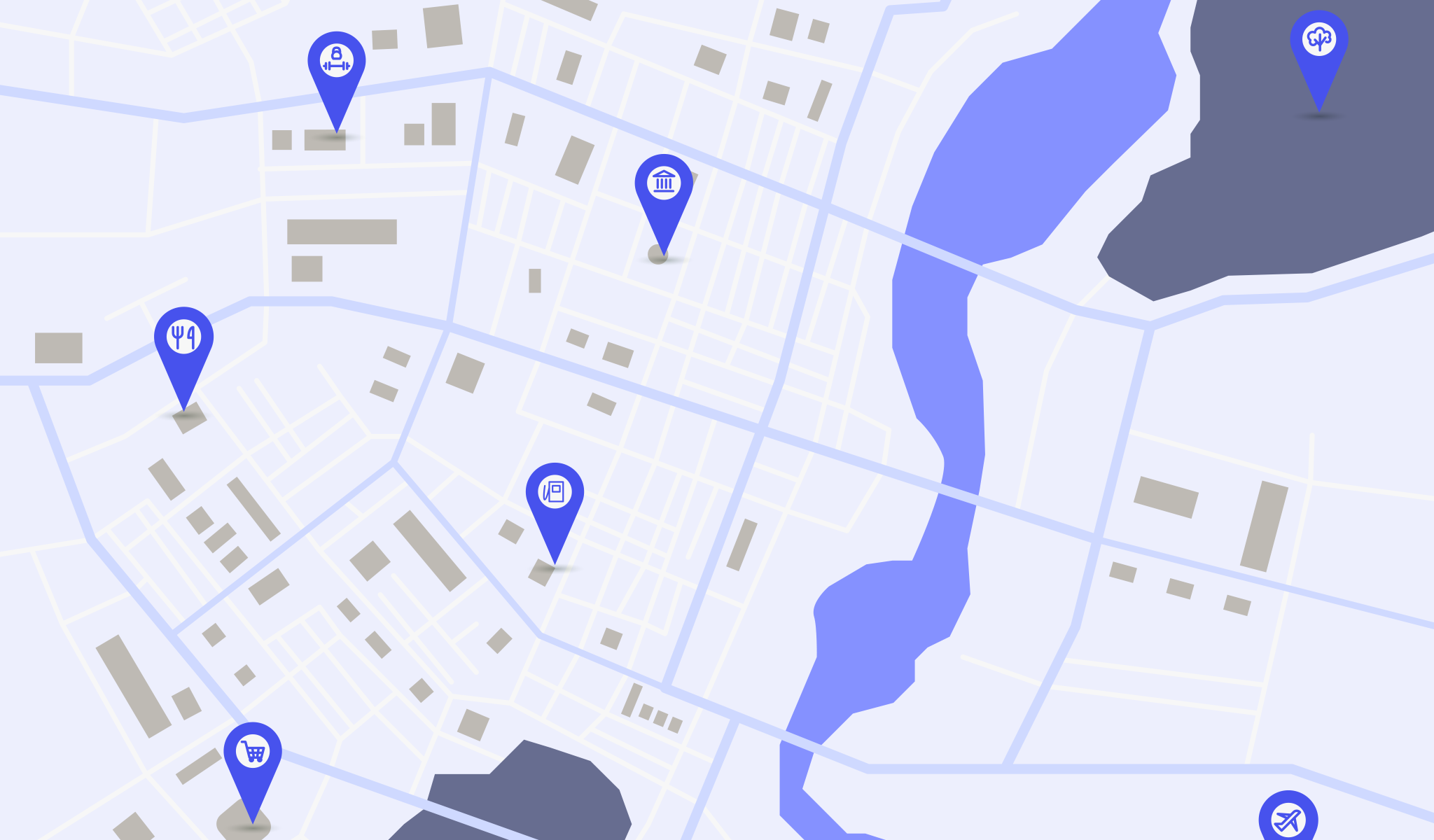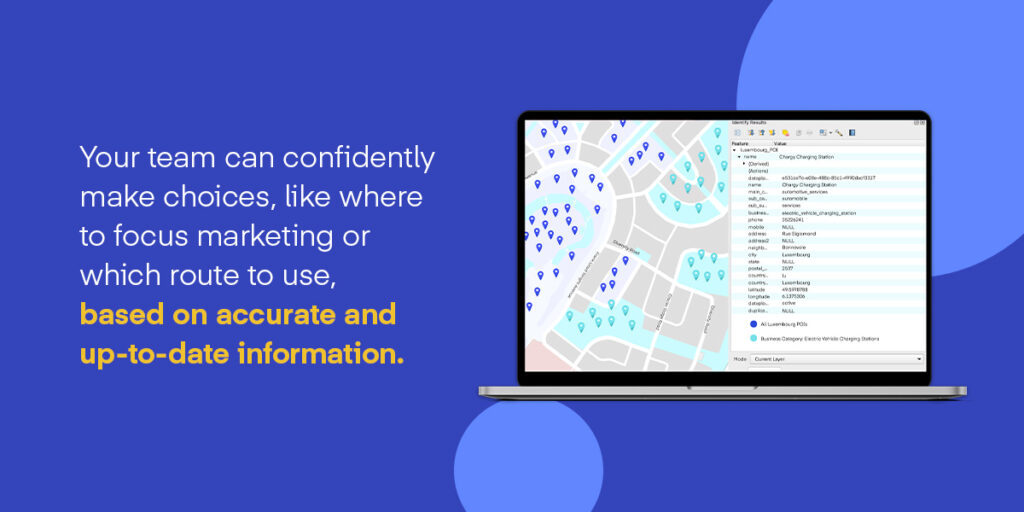
How Real Estate Leaders Use POI Data to Make Smarter Decisions
Point-of-interest (POI) data underpins many of the technologies businesses use to innovate, grow and complete everyday operations. You’ll find it across industries, powering everything from consumer-facing tools to complex competitor research — but how exactly does it benefit organizations?
Let’s take a closer look at the benefits of POI data, its challenges and what makes it such a valuable resource for most businesses.
What Is POI?
Point-of-interest data contains information on physical places and their value to the public. These places might be helpful, necessary or interesting, including locations like stores, restaurants, gas stations, hospitals and parks. POI data can also include context on the locations. For example, it might collect information on how long customers spend at a place or create a picture of competing locations.
Many businesses use POI information to create databases and maps that inform various processes for learning about the market, consumers and competitors. Some of these applications include:
- Selecting sites for expansion or investment.
- Monitoring consumer behaviors across locations.
- Performing competitor and market analyses.
- Calculating and evaluating transit and logistics routes.
- Informing strategic planning demands.
- Finding the most profitable operating hours.
- Building tools, like interactive maps and location-based advertising notifications.
- Predicting potential risks and planning accordingly.
- Advertising in the right ways to the right people.
POI can be extremely detailed, facilitating powerful insights and tools. It usually identifies various data points via the North American Industry Classification System.
Why Is POI Data Beneficial for Businesses?
POI data’s many capabilities make it a wide-reaching resource for businesses of all types. The pros of POI data range from growth opportunities to competitor insights. Here are a few POI data benefits for businesses:
1. Improved Decision-Making

POI data can provide real-time insights into various factors to support informed and effective decision-making. Your team can confidently make choices, like where to focus marketing or which route to use, based on accurate and up-to-date information.
2. Streamlined Business Processes
Collecting data individually is highly inefficient and would likely require a limited scope or extensive resources. POI data is ideal for assessing vast amounts of information quickly and feeding it into complex calculations.
POI data can also facilitate faster operations through tools like route planners and maps. Visualizing POI information and integrating it with your business processes can drastically improve your speed.
3. Optimized Resource Allocation
Most of your business decisions will require time and/or money, and one of the biggest pros of location intelligence is its ability to minimize those costs. You can better control expenses like inventory practices, project budgets and staffing requirements.
POI data also helps improve the profitability of your efforts, such as when choosing an effective location for an ad campaign.
4. Better Audience Insights
Location intelligence offers a much deeper understanding of your customers, as you can explore overarching behaviors and preferences. POI data aggregates many types of information, allowing you to tailor your business decisions to consumer needs.
Say you want to open a new location for a restaurant. You could use POI data to see how many competitors exist in a given area and whether consumers like them. If customer satisfaction scores are low, perhaps you can fill a need in the area — or identify a problem with the location. Marketing campaigns are another great way to learn from POI data.
5. Competitive Advantages and Opportunities
When you can offer a better customer experience, like through more relevant services or tools, you can build loyalty and improve your market share. POI information gives you an edge over the competition while helping you stay agile in evolving market conditions. With a creative approach to using POI data, you can often find opportunities that other businesses are missing.
6. Effective Competitor Research
Similarly, POI is a great way to conduct competitor research. Just as you might research your own performance, you can use POI to assess your competition, scoping out opportunities and possible challenges. Explore their physical locations, where they’re branching out, who’s growing quickly and other aspects of their operation.
With a comprehensive approach, location data can help you differentiate your business.
7. Risk Prevention
Get ahead of threats with a better understanding of your environment. Whether making investments or operational decisions, location intelligence can help you spot trends or potential roadblocks. Avoid financial problems, reputational damage and other avoidable issues.
Top Challenges of POI Data
While the benefits of POI data are plentiful, it also comes with some challenges.
1. Quality
Low-quality data can affect the utility of your information. If it’s inaccurate or incomplete, you can’t make decisions with confidence. For instance, a data set with plenty of entries might not be as helpful as it seems if most of its attributes are blank. Bad POI information could put business-critical judgments at risk.
POI data should offer appropriate coverage in relevant areas and use intelligent validation measures to confirm the information. Local expertise through a human review process can add an extra layer of quality control.
2. Recency
Location intelligence must also be up-to-date. Many fast-changing factors can affect your analyses, such as seasonal trends and industry developments. Some POI data providers offer updates as infrequently as once a year. Real-time updates are much more reliable.
3. Standardization
Many location information systems do not use the same formats or models, and the data sets might not be compatible with each other. Additionally, some organizations have different ideas of which places or attributes are valuable. The information may not be helpful if your data provider doesn’t collect locations or details that are important to your needs.
4. Collection Methods
POI information can come from many places. With data privacy top of mind for today’s consumers and businesses, your intelligence must come from ethical and legal methods. With 72% of Americans supporting more regulation for data protection, a responsible approach is crucial for avoiding legal challenges in the future.
Finding a Location Intelligence Data Provider
If you want to maximize the benefits of POI data, you’ll need to choose a data provider to address any potential challenges. Some aspects to look for in a provider include:
- Robust quality control, including human oversight and multiple validation steps.
- Extensive brand data and global location coverage.
- Real-time updates for reliable, more accurate insights.
- Comprehensive and helpful metadata, like confidence scores and consumer preferences.
Maximize the Benefits of POI Data With dataplor
At dataplor, we bring comprehensive, quality location information to one place. Businesses across industries use our POI data for everything from predicting success to uncovering new opportunities. dataplor spans over 200 countries and territories and leverages powerful AI-driven resources to achieve unparalleled accuracy and insights.
Whether you want to expand into new areas, build an existing audience or achieve another goal we’ve mentioned, dataplor can help. Contact our team today to learn more about how we can make the benefits of POI data a reality for your organization.



